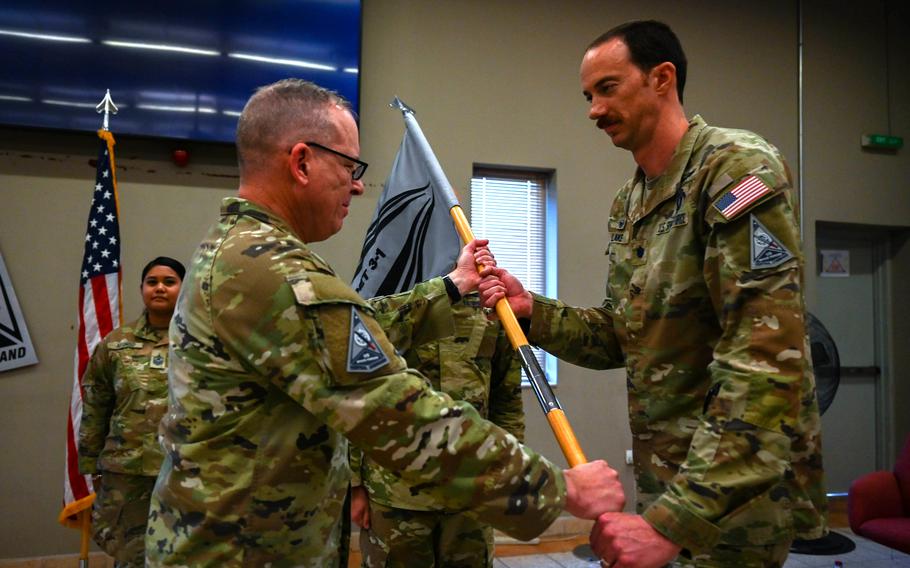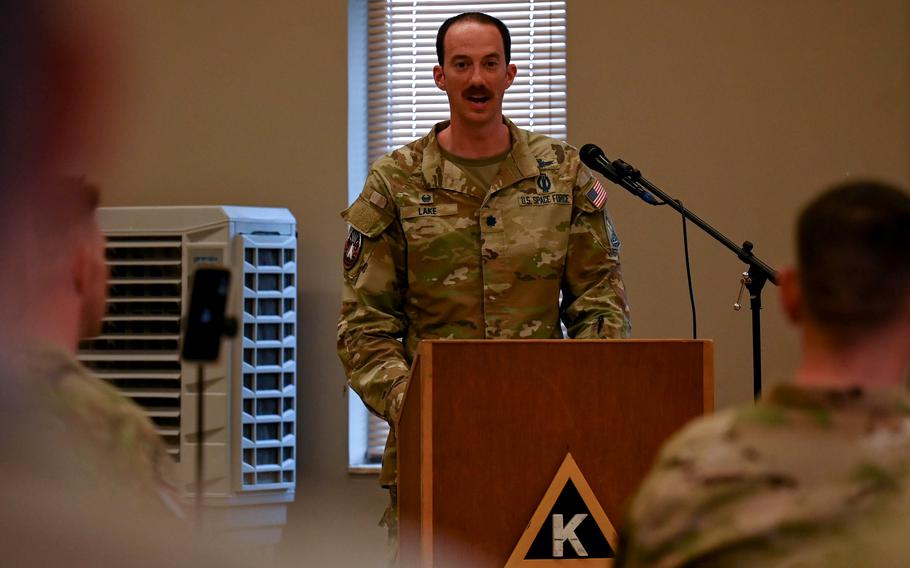
Space Force Col. Christopher Putman, left, U.S. Space Forces Central commander, passes the guidon to Lt. Col. Deane Lake, leader of combat detachment 3-1, at a ceremony March 12, 2024. (U.S. Air Force)
A Space Force unit recently stood up in the Middle East is making its mark by giving a heads-up to U.S. troops being targeted by enemy missiles.
Combat Detachment 3-1, which has roughly 24 guardians, uses satellite-based sensors to give deployed troops as much time as possible to protect themselves, said the unit’s first commander, Lt. Col. Deane Lake.
The guardians have been instrumental in protecting U.S. troops in the region, Lake said in a recent interview at Al Udeid Air Base in Qatar.
He assumed command of the detachment March 12, a statement Wednesday from U.S. Air Forces Central said. The unit is the first Space Force combat detachment to activate in one of the military’s component commands, the statement said. Deployed guardians will be co-located at the Combined Air and Space Operations Center at Al Udeid.
Lake deployed to the Middle East a few weeks before Oct. 7, when the Israel-Hamas war started. Shortly thereafter, militant groups angered by American support for Israel began launching drone and rocket attacks on U.S. troops in the region.

Lt. Col. Deane Lake, U.S. Space Forces Central combat detachment 3-1 commander, delivers remarks during an activation and assumption of command ceremony, March 12, 2024. (U.S. Air Force)
One drone attack on a U.S. base in Jordan on Jan. 28 left three soldiers dead and dozens more injured.
“We’ve been a part of watching all that and trying to provide notification when we can of any launches,” Lake said.
While Lake declined to provide specific examples of missile launches that the deployed guardians have detected, a U.S. Central Command statement in February said Space Force warning systems had helped defend ships in the Red Sea from missiles fired by Houthi militants in Yemen.
The network of sensors the guardians use can detect the telltale heat signatures of rockets and missiles, said Masao Dahlgren, a Missile Defense Project fellow at the Washington-based Center for Strategic and International Studies.
“It’s almost certain that they’ve already saved lives,” Dahlgren said.
Consolidating deployed Space Force personnel into a unit located in the same room as military decision-makers will speed up information sharing about missile launches, and Combat Detachment 3-1 could be the prototype for deployed Space Force units, he said.
“This is really the proving ground for the Space Force’s new organization, for missile detection and this mission,” Dahlgren said.